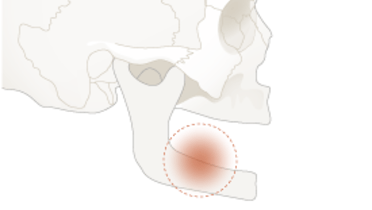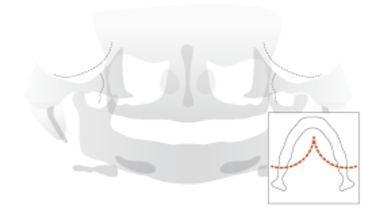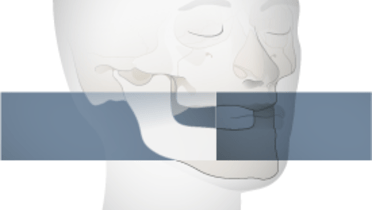-
0
Patient Assessment
- 0.1 Patient demand
- 0.2 Overarching considerations
- 0.3 Local history
- 0.4 Anatomical location
- 0.5 General patient history
-
0.6
Risk assessment & special high risk categories
- 5.1 Risk assessment & special high risk categories
- 5.2 age
- 5.3 Compliance
- 5.4 Smoking
- 5.5 Drug abuse
- 5.6 Recreational drugs and alcohol abuse
- 5.7 Parafunctions
- 5.8 Diabetes
- 5.9 Osteoporosis
- 5.10 Coagulation disorders and anticoagulant therapy
- 5.11 Steroids
- 5.12 Bisphosphonates
- 5.13 BRONJ / ARONJ
- 5.14 Radiotherapy
- 5.15 Risk factors
-
1
Diagnostics
-
1.1
Clinical Assessment
- 0.1 Lip line
- 0.2 Mouth opening
- 0.3 Vertical dimension
- 0.4 Maxillo-mandibular relationship
- 0.5 TMD
- 0.6 Existing prosthesis
- 0.7 Muco-gingival junction
- 0.8 Hyposalivation and Xerostomia
- 1.2 Clinical findings
-
1.3
Clinical diagnostic assessments
- 2.1 Microbiology
- 2.2 Salivary output
-
1.4
Diagnostic imaging
- 3.1 Imaging overview
- 3.2 Intraoral radiographs
- 3.3 Panoramic
- 3.4 CBCT
- 3.5 CT
- 1.5 Diagnostic prosthodontic guides
-
1.1
Clinical Assessment
-
2
Treatment Options
- 2.1 Mucosally-supported
-
2.2
Implant-retained/supported, general
- 1.1 Prosthodontic options overview
- 1.2 Number of implants maxilla and mandible
- 1.3 Time to function
- 1.4 Submerged or non-submerged
- 1.5 Soft tissue management
- 1.6 Hard tissue management, mandible
- 1.7 Hard tissue management, maxilla
- 1.8 Need for grafting
- 1.9 Healed vs fresh extraction socket
- 1.10 Digital treatment planning protocols
- 2.3 Implant prosthetics - removable
-
2.4
Implant prosthetics - fixed
- 2.5 Comprehensive treatment concepts
-
3
Treatment Procedures
-
3.1
Surgical
-
3.2
Removable prosthetics
-
3.3
Fixed prosthetics
-
3.1
Surgical
- 4 Aftercare
プロービング
Key points
- プロービングは、インプラント周囲組織の封鎖に永久的な障害を引き起こすものではありません。
- プロービングにより計測される結合組織のレベルは、その下の健康な領域の辺縁骨の高さと優れた相関を示します。
- プロービングデプスの経時的な増加は、出血や滲出液とも関連し、懸念すべき問題の1つです。
インプラント周囲組織の状態のモニタリング
X線検査による骨レベルの評価は、不必要な被曝を防ぐため、頻回に行うことができません。軟組織の炎症が進むほど、プロービングデプスと歯槽骨高径の相関が低下するとはいえ、軟組織をモニタリングすることは、下の骨に将来起こりうる問題を検出するのに有効です。ただし、プロービングデプスに漸進的な増加が認められた場合は、歯槽骨高径を計測し、初期高径からの変化を確認するため、X線検査を行う必要があります。
プロービングパラメータ
プロービングはインプラント表面の上皮付着を破壊しますが、インプラント周囲組織の封鎖に永久的な障害は引き起こすものではありません。骨内インプラント周囲の粘膜貫通は歯周組織の貫通に類似していますが、同じではありません。天然歯と比較して、プローブ先端は歯槽頂に1~1.5 mm以内に近接します。プローブの貫通の程度は、プロービング圧により左右され、0.25 ニュートンが理想的です。この点で、荷重自動制御プローブ(automated controlled-force probes)は、優れた再現性でプロービングデプスを計測することができます。プロービングデプスに影響を及ぼす他の要因としては、挿入角度、プローブの先端経、インプラントの表面特性、残留セメントの有無および軟組織の炎症の程度が挙げられます。柔軟性のあるプラスチック製プローブを使用すると、アバットメントや補綴物の表面を傷つけず、プラークの蓄積を防ぐことができます。
経時的な変化を確認するためには、補綴物設置時にプロービングデプスを計測しておくことが重要です。推奨される方法の1つは、補綴物上に特定の基準点を設定し、この点を基準にプロービングデプスを計測する方法です。しかしながら、ときに補綴物がプローブのアクセスを妨げ、適切な角度で挿入することができないため、補綴物の撤去を余儀なくされることもあります。



